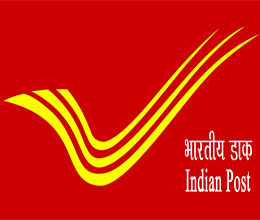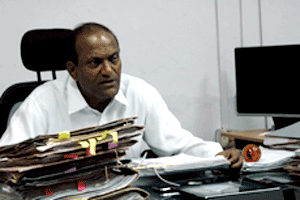Interview
 The department of posts will soon branch out into a bank. It is all readying up to launch the payments bank in terms of the in-principle approval it had reveived. And the staff too is excited about the prospects of this new avatar. M.S. Ramanujan, member (Banking & HRD), department of posts, told a recent symposium on financial inclusion: “It’s very exciting for us as the payments industry is going to be like skating on thin ice. We don’t know who will fall by the wayside, when there will be a bloodbath, and what kind of pricing/revenue models will emerge. This will be a game of high volumes and wafer-thin margins.”
The department of posts will soon branch out into a bank. It is all readying up to launch the payments bank in terms of the in-principle approval it had reveived. And the staff too is excited about the prospects of this new avatar. M.S. Ramanujan, member (Banking & HRD), department of posts, told a recent symposium on financial inclusion: “It’s very exciting for us as the payments industry is going to be like skating on thin ice. We don’t know who will fall by the wayside, when there will be a bloodbath, and what kind of pricing/revenue models will emerge. This will be a game of high volumes and wafer-thin margins.”
The banking entity will be called ‘India Post Payments Bank’ and will have an initial capital of Rs300 crore, against the RBI stipulated Rs100 crore. The bank expected to handle P2P payments like remittances; citizen to government of C2G payments like taxes, duties, levies, customer to bank or C2B payments like e-commerce-related payments, and government to citizen or G2C payments like DBT payments.
Ramanujan says the deparment will optimally leverage its existing network and infrastructure for the bank. The bank may have a different identity, however. Nearly 7,000 full-services branches of the department are under core banking solution (CBS) and by end March 2016, this number will go up to 25,000, says Ramanujan.
The department may start a pilot project in January 2016 at select locations. Several entities, including World Bank, State Bank of India and telecom companies have shown interest in partnership with the department for the payments bank. It is also seriously considering partnering with BSNL and use the latter’s mobile platform to offer various services.
Meanwhile, the department is likely to engage a consultant for the banking foray. It is learnt to have shortlisted six entities for the purpose and it will soon make up its mind on the selection which will then be placed before the Public Investment Board for approval. The entire project will go for a cabinet approval in November post which a public company will be registered by December.
The government is proposing to make use of the reach of the postmen to usher in financial inclusion. A structured program is being worked out and the proposala is for banks to pay a fee to use the services of the department. Ramanujan had said the idea is to turn a post office into a financial literacy hub. There will be weekly literacy camps and selected post office employees will undergo a structured training program developed by banks on financial literacy, he added. The government wants to focus on financial literacy as part of the financial inclusion program. With crores of accounts having been opened, it wants to ensure that people take advantage of the government schemes, including soft loans under the MUDRA Yojana.
Ramanujan speaks about the departments plans in an e-mail interaction:
Mohammed Irshad: India Post has already been managing a sort of banking operations for long with its own savings schemes and deposit schemes. Now that RBI has given the department in-principle approval to launch a payments bank, what would be the changes you would bring in the current status?
 M.S. Ramanujan:The Post Office Savings Bank (POSB) operations are over one and half centuries old. The POSB is run by us for the ministry of finance (MOF). The POSB has a wide suite of products from the savings bank to RDs, TDs, PPFs, MIS, SCSS and the certificates. The recent ‘Sovereign Gold Bond’ introduced by the government will also be made available in the POSB. The RBI has set out a specific mandate for the payments bank entities to operate payments and remittances services to further financial inclusion, by providing transactions and savings account focused on the migrant labourers force, low income households, small business and others. India Post has generally been doing this service but now with Payments Bank our focus will become sharper.
M.S. Ramanujan:The Post Office Savings Bank (POSB) operations are over one and half centuries old. The POSB is run by us for the ministry of finance (MOF). The POSB has a wide suite of products from the savings bank to RDs, TDs, PPFs, MIS, SCSS and the certificates. The recent ‘Sovereign Gold Bond’ introduced by the government will also be made available in the POSB. The RBI has set out a specific mandate for the payments bank entities to operate payments and remittances services to further financial inclusion, by providing transactions and savings account focused on the migrant labourers force, low income households, small business and others. India Post has generally been doing this service but now with Payments Bank our focus will become sharper.
What new products and services you propose to launch?
Products and services are broadly in thoses segments pre-defined by RBI. Payments and remittances are presently happening through various modes – banks, post offices, non-bank players such as telcos. These entities are using mobile services, pre-paid instruments, ATMs, PoS terminals and of course the informal transfer route. It has to be a mix of everything.
India Post has an extraordinary reach, even into those remotest corners of the country where traditional banks dare not look at. How would you leverage this strength and come out with unique products and services? Will there be a singular focus for you on these unbanked regions?
India Post Payments Bank will certainly like to leverage the large outreach of the postal network especially in the under-banked and unbanked areas where the PoS machines are already present. Financial inclusion in the real sense of the term will have to happen with the outliers.
Do you think the huge network that the department has will be an advantage? If so in what way?
The network has the biggest advantage of being trust-surplus. Therefore, it makes sense to work upon it.
While the department has already inducted a core banking system and also operate ATMs, how would you be strengthening this infrastructure? Will it be an all-new system that will come in place?
CBS would cover all the full service post offices which are about 25000 by the end of FY2015-16. Simultaneously, the technological reach will touch the 1,30,000 village PoS. About 1000 ATMs will be operative by the same period and it would become inter-operable with other ATMs. Cost-optimization would require use of shared resources where it fits well and in other areas to have independent systems.
What about the specialized manpower that would be required to operate a bank? How will you, as a government department, bring in people laterally?
Talent would have to be sourced from the market as the bank will be a corporate entity.
In banking sector, especially in payments vertical, partnerships are key. What are your plans in the short-term and long term?
Partnerships hold the key for everybody. Financial inclusion can be pursued meaningfully only when the players in the industry are inclusive amongst themselves. There is much to be done collectively.
The department faces the prospect of competing with high caliber Indian and multinational players, leave aside the Indian public sector banks. How do you propose to make a difference?
Reach and outreach plus all pervasive trust factors are critical for banking success and that is the value – differentiation for us.
Will the banking operations be digitized from day 1 or will it be a gradual transformation?
Digital platform will be one of the key modes of operation alongside of other service channels.
What will be the business structure? Will the banking activities be handled by a standalone unit or will it come under the ambit of the postal department?
As a corporate entity it will look very much like a PSU bank and some of its relevant structures, systems and processes.
There are instances where postal department has been carrying out banking operations in several countries. Would these be some sort of a model for you?
Postal Bank is in fact one of the oldest banks in many countries. Learning from looking around for best practices has to happen. And learning outcomes would be tempered to suit local context.







